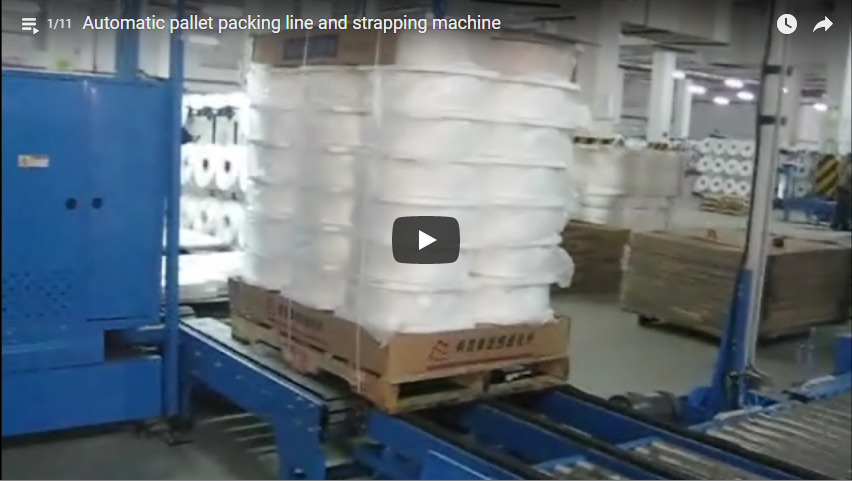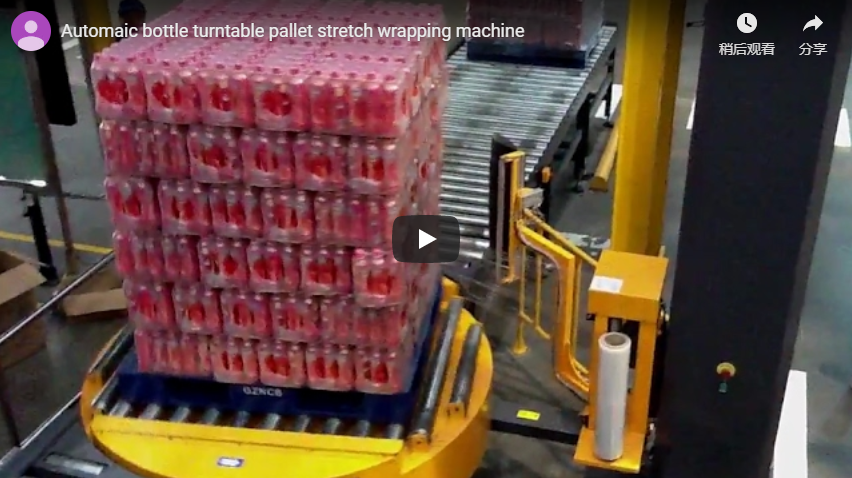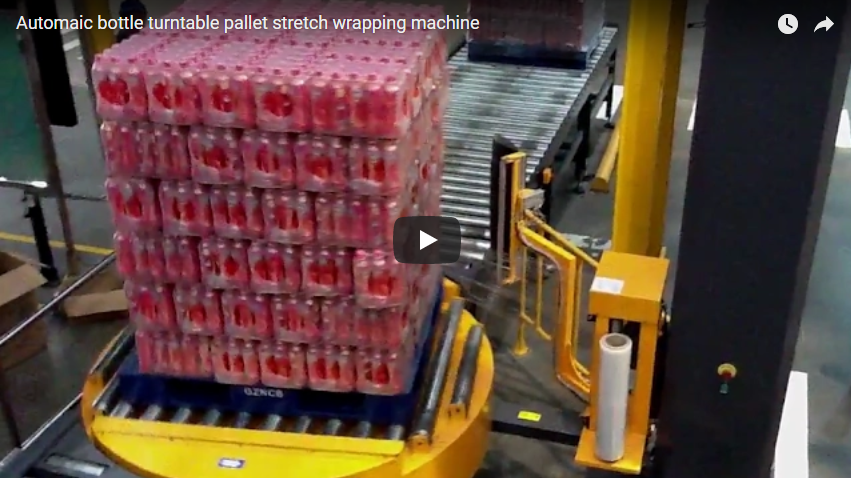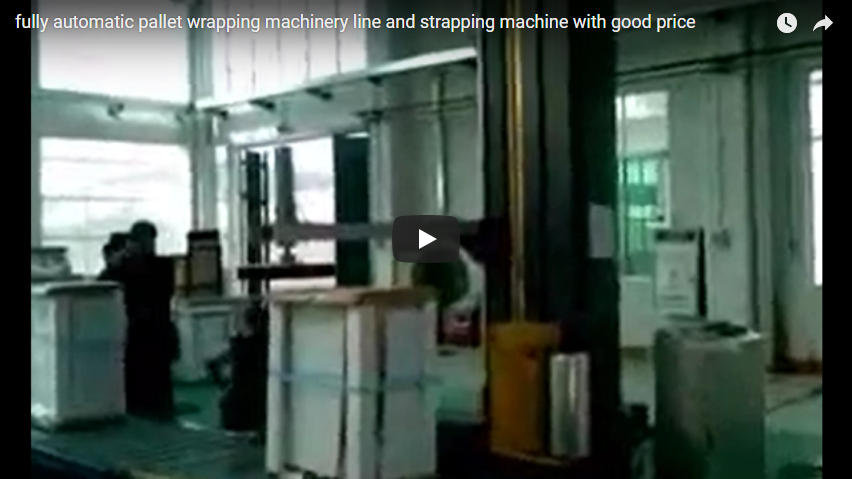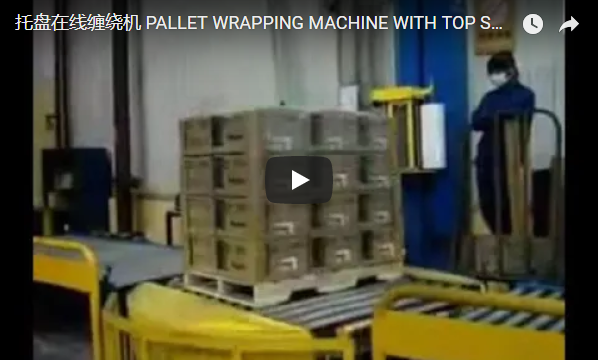1. Understanding the Automatic Rotary Arm Stretch Wrapper
The automatic rotary arm stretch wrapper represents a sophisticated solution in modern packaging lines, specifically designed for stabilizing and securing palletized loads using stretch film. Unlike traditional turntable wrappers where the pallet rotates, this machine keeps the pallet stationary while a rotating arm dispenses the film. This makes it exceptionally suitable for wrapping loads that are very heavy, unstable, light, or have an irregular shape, which might shift or collapse if rotated at speed.
2. How It Works: The Wrapping Process Explained
The operational sequence of an automatic rotary arm stretch wrapper is engineered for efficiency and consistency:
- Load Positioning: The pallet load is typically conveyed into the wrapping zone and stops at a predetermined position. This can be part of a fully automated conveyor system or done via forklift for semi-automated setups.
- Program Selection: Operators (or an automated system) select the appropriate wrapping program based on the load characteristics (size, stability, required containment force) via a control interface, often a touchscreen PLC (Programmable Logic Controller).
- Film Application: The rotary arm, equipped with the film carriage, begins to rotate around the stationary pallet. Simultaneously, the film carriage moves vertically up and/or down the mast according to the selected program, ensuring complete coverage from top to bottom.
- Film Pre-Stretching: Crucially, most modern rotary arm wrappers incorporate a powered pre-stretch system. This stretches the film (often by 200-300% or more) before it's applied to the load. This optimizes film usage (significant cost savings) and provides better load containment with less material.
- Clamping, Cutting, and Sealing: Once the wrapping cycle is complete, the machine automatically clamps the leading edge of the film, cuts it cleanly, and typically uses a heat sealer or wiping mechanism to secure the film tail to the pallet load, preventing unraveling.
- Cycle Completion: The arm returns to its home position, ready for the next pallet. The wrapped pallet can then be automatically conveyed out of the wrapping station.
3. Key Technical Specifications and Features
While exact specifications vary by model and manufacturer, typical features and parameters include:
- Rotation Speed: Adjustable arm rotation speeds (e.g., 10-30 RPM) to match throughput requirements and load stability.
- Maximum Load Size (L x W x H): Defines the physical limits of the pallet dimensions the machine can handle.
- Maximum Load Weight: Often practically unlimited as the load remains stationary on the conveyor or floor.
- Film Carriage: Powered pre-stretch system (e.g., 250% standard, variable options available).
- Control System: PLC controls with user-friendly HMI (Human Machine Interface) touchscreen for parameter adjustment, program storage, and diagnostics.
- Wrapping Parameters: Customizable settings for top/bottom wraps, arm speed, carriage speed (up/down), film tension, and pre-stretch levels.
- Safety: Equipped with safety fencing, light curtains at entry/exit points, emergency stops, and obstacle sensors to ensure operator safety.
- Construction: Heavy-duty steel frame for durability and stability during high-speed operation.
4. Advantages of Using a Rotary Arm System
Investing in an automatic rotary arm stretch wrapper offers significant benefits:
- Ideal for Difficult Loads: The primary advantage is its ability to securely wrap unstable, very heavy, or lightweight loads without risking product shift or damage caused by rotation.
- High Throughput: Capable of wrapping a large number of pallets per hour, integrating seamlessly into high-speed production or distribution lines.
- Film Efficiency: Powered pre-stretch significantly reduces film consumption compared to manual or semi-automatic methods, leading to lower material costs and environmental impact.
- Consistency: Automated control ensures every pallet is wrapped according to specified parameters, improving load security and reducing product damage during transit.
- Automation Integration: Designed for easy integration with upstream and downstream conveyors, AGVs (Automated Guided Vehicles), and central line control systems.
- Reduced Labor: Fully automates the wrapping process, freeing up personnel for other tasks.
- Improved Safety: Eliminates manual wrapping tasks and incorporates robust safety systems.
5. Common Applications and Industries
Automatic rotary arm wrappers are vital in various sectors:
- Logistics and Distribution Centers: High-volume pallet wrapping for shipment.
- Food and Beverage: Wrapping palletized goods, including potentially unstable items like bottled drinks or stacked cases.
- Building Materials: Securing heavy pallets of bricks, tiles, cement bags.
- Paper and Printing: Wrapping heavy paper rolls or stacked printed materials.
- Chemical Industry: Securing drums or bags on pallets.
- Manufacturing: General pallet wrapping for finished goods across numerous industries.
6. Optional Enhancements: The Top Sheet Dispenser
As mentioned briefly in the original description, an optional integrated top sheet dispenser enhances pallet protection.
- Function: Automatically places a sheet of film or other protective material (like PE film) over the top of the pallet load before the wrapping cycle begins.
- Benefit: Provides crucial protection against dust, moisture, and tampering during storage and transport, creating a fully enclosed, weather-resistant load (often referred to as "top and N-side wrapping").
- Integration: This module is typically mounted adjacent to the wrapping zone and works in sequence with the main wrapping cycle. Other options can include integrated weighing systems or roping devices to form a 'cable' of film for extra load stability.
7. Personal Insights & Operational Tips
Having observed and integrated these machines in various facilities, here are a few practical points:
- Reliability is Key: When properly maintained, these machines are workhorses. Their stationary-pallet approach simplifies mechanics compared to high-speed turntables, often leading to high uptime.
- Film Matters: Using the right type and quality of stretch film, matched to the pre-stretch system, is critical for achieving optimal performance and cost-effectiveness. Don't skimp on film quality!
- Settings Optimization: Take the time to fine-tune wrapping programs for different load types. Over-stretching or incorrect tension can damage products or waste film. Under-wrapping compromises load security.
- Maintenance Schedule: Regular checks on the film carriage rollers, cutting/sealing mechanism, rotary arm drive, and safety sensors are essential for consistent performance and preventing costly downtime. Operator training should emphasize routine cleaning and basic checks.
In conclusion, the automatic rotary arm stretch wrapper is an indispensable tool for businesses needing efficient, reliable, and safe pallet wrapping, especially for challenging load types. Its ability to integrate into automated lines and optimize film usage delivers tangible operational and cost benefits.
For more details on specific models and configurations tailored to your needs, explore options at www.fhopepack.com.

